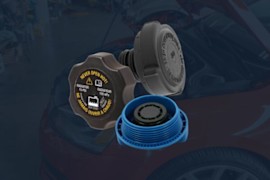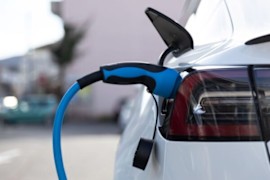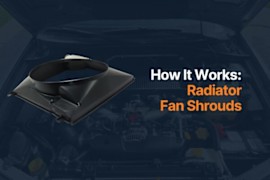{
"lazyNodes": false,
"abFitnotesFlag": false,
"abCrawlReviews": false,
"productOptionsCookie": false,
"orderDelayFlag": false,
"skipSessionCookie": false,
"covidMessage": false,
"fullTitleCookie": false,
"nrLoggerCookie": false,
"checkoutReviewCookie": false,
"productOptionSeqCookie": false,
"maintenanceFlag": false,
"bufferETACookie": false,
"multiShippingDiscountFlag": false,
"newFitmentFlag": false,
"surveyOptInFlag": false,
"crossSellFlag": false,
"skuMappingFlag": false,
"paySplitCookie": false,
"callDisableFlag": false,
"zipPaymentFlag": "u",
"hassleFreeReturn": false,
"lifetimeReplacement": false,
"cpn_off": false
}Toyota Tercel Radiators
Shop Catalog
![]() WARNING: This product can expose you to chemical which is known to the State of California to cause cancer and birth defects or other reproductive harm. For more information go to www.P65Warnings.ca.gov.
WARNING: This product can expose you to chemical which is known to the State of California to cause cancer and birth defects or other reproductive harm. For more information go to www.P65Warnings.ca.gov.
![]() WARNING: This product can expose you to chemical which is known to the State of California to cause cancer and birth defects or other reproductive harm. For more information go to www.P65Warnings.ca.gov.
WARNING: This product can expose you to chemical which is known to the State of California to cause cancer and birth defects or other reproductive harm. For more information go to www.P65Warnings.ca.gov.
![]() WARNING: This product can expose you to chemical which is known to the State of California to cause cancer and birth defects or other reproductive harm. For more information go to www.P65Warnings.ca.gov.
WARNING: This product can expose you to chemical which is known to the State of California to cause cancer and birth defects or other reproductive harm. For more information go to www.P65Warnings.ca.gov.
![]() WARNING: This product can expose you to chemical which is known to the State of California to cause cancer and birth defects or other reproductive harm. For more information go to www.P65Warnings.ca.gov.
WARNING: This product can expose you to chemical which is known to the State of California to cause cancer and birth defects or other reproductive harm. For more information go to www.P65Warnings.ca.gov.
![]() WARNING: This product can expose you to chemical which is known to the State of California to cause cancer and birth defects or other reproductive harm. For more information go to www.P65Warnings.ca.gov.
WARNING: This product can expose you to chemical which is known to the State of California to cause cancer and birth defects or other reproductive harm. For more information go to www.P65Warnings.ca.gov.
![]() WARNING: This product can expose you to chemical which is known to the State of California to cause cancer and birth defects or other reproductive harm. For more information go to www.P65Warnings.ca.gov.
WARNING: This product can expose you to chemical which is known to the State of California to cause cancer and birth defects or other reproductive harm. For more information go to www.P65Warnings.ca.gov.
![]() WARNING: This product can expose you to chemical which is known to the State of California to cause cancer and birth defects or other reproductive harm. For more information go to www.P65Warnings.ca.gov.
WARNING: This product can expose you to chemical which is known to the State of California to cause cancer and birth defects or other reproductive harm. For more information go to www.P65Warnings.ca.gov.
Top Rated Products
Popular Products
Product Questions & Answers
Customer Guides
Troubleshooting Common Toyota Tercel Radiator Problems
Toyota Tercel radiators can fail at any moment. It is nice to know how to fix the problem once you experience any of the following:
Internal Corrosion
This is the most common reason why radiator fails. Several factors contribute to this, but the most common is when the coolant turns acidic. The now acidic coolant becomes corrosive and eats away the radiator from the inside. This can be prevented by changing the coolant as suggested by the manufacturer's preventive maintenance guide. Corrosion can also occur if the engine doesn't have a good electrical ground connection. This is called, electrolytic corrosion. Once this happens, your only option is to replace the radiator.
Leaking radiator
If you're in the middle of nowhere, you certainly cannot find a mechanic or the right tools to fix your leaking radiator. One way to quick-fix your radiator is by. Yes, EGG! It doesn't matter if it's chicken or duck egg. As long as it is an egg (an ostrich egg would be overkill, though). Let the engine cool for a bit before removing the radiator cap and pouring the egg in the radiator. The hot water inside the radiator will cool the egg while the pressure from the leak will force it into the leak. You can also use a cold weld epoxy to plug the leak. Other alternatives would be a duct tape and black pepper. Don't forget to install the radiator cap so that the radiator builds pressure and plug the leak. Remember that these are not meant to permanently fix your radiator. They are only meant to get you home.
Once you're home, weld the hole in the radiator. Replace the radiator if the damage. Any additive in the radiator can be flushed with high pressure.
Overheating engine
The radiator is responsible for keeping the engine at its ideal operating temperature. If your car overheats, it means that the radiator has some problems. One way to know that your vehicle is overheating is by checking the thermostat or by looking at the hood if it is spewing steam. Pull over to the side of the road once you see any of these. Open the hood and check for leaks in the radiator and hoses. Check the hoses. Check the fan if it is working. Once you see the problem, make a temporary fix and drive straight home.
Owning a discontinued car model may pose some problems, from replacement parts to the fact that the car is already aging. However, you can keep your car well maintained for as long as possible if you're practicing good preventive maintenance. Discussed below are ways to maintain your Toyota Percel radiator:
Drain and flush your radiator
One of the worst enemies of radiator is corrosion. Ironically, the most common source of corrosion doesn't come from external sources. It is the coolant, turning acidic by not replacing it regularly can your radiator inside out. Most experts suggest draining and flushing old coolant every few years. A good sign that your coolant needs to be replaced is when it has already turned brownish. Refer to the owner's manual for more details.
Inspect radiator and radiator hoses
As your vehicle ages, the hoses get brittle, spongy, and worn out, and the radiator gets more vulnerable to rust. When flushing your coolant or when doing some repair to your engine, check the radiator and hoses too to make sure that they are all in good working order.
Examine the radiator for any sign of a leak
You know if you have a leaking radiator if your vehicle stalls and overheats, but you can prevent this from happening by inspecting your radiator every time you change your engine oil.
Keep the overflow tank filled with the correct amount of coolant
The overflow talk is as important as your radiator. Make sure that its condition is as good as any other part of the cooling system. Always check the coolant level as well as if there's a leak.
Check other parts of the cooling system
The basic components of the vehicle's cooling system are fan, water pump, radiator, sensor(s), overflow tank, coolant, belts, thermostat, hoses, and clamps. Inspect each part yearly and check for leak, hole, damage, and wear.
Replace radiator if it is beyond repairable
There is no point in keeping an old radiator if your car no longer functions properly. The cost undermines the benefits of having a good working radiator.
















